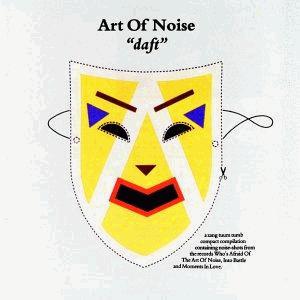
| Artist: | Art of Noise |
| Title: | "daft" |
| Released: | 1984 |
| Label: | ZTT Records |
| Time: | 61:20 |
| Producer(s): | See Artists ... |
| Appears with: | |
| Category: | Pop/Rock |
| Rating: | ******.... (6/10) |
| Media type: | CD |
| Purchase date: | 2001.02.09 |
| Price in €: | 14,46 |
| Web address: | www.ztt.com/artistpages/AON_expand.html |